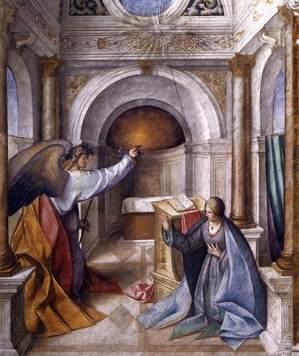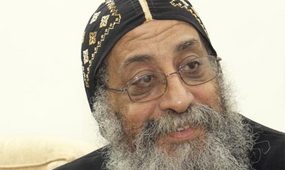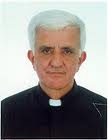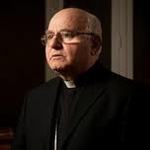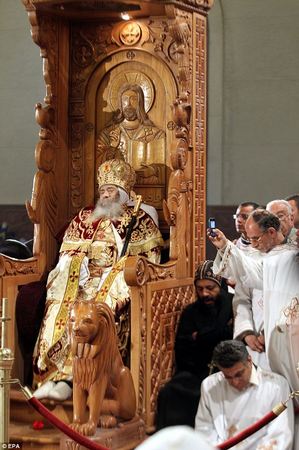 The 85 year old Chaldean Patriarch and Cardinal Emmanuel III Delly resigned today.
The 85 year old Chaldean Patriarch and Cardinal Emmanuel III Delly resigned today.
Tag: Eastern Christianity
New Orthodox Patriarch of Antioch elected
 The Greek Orthodox Church of Antioch elected a new patriarch, His Eminence, Metropolitan Archbishop of Europe, John Yazigi, 57. He will be known as John X.
The Greek Orthodox Church of Antioch elected a new patriarch, His Eminence, Metropolitan Archbishop of Europe, John Yazigi, 57. He will be known as John X.
Patriarch Ignatius IV Hazim, 91, RIP
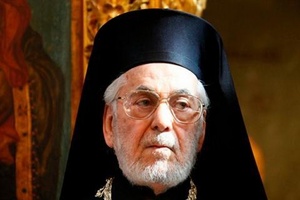 Greek Orthodox Patriarch Ignatius IV Hazim, 91, died today, Wednesday, at a Beirut hospital after suffering a stroke a day earlier.
Greek Orthodox Patriarch Ignatius IV Hazim, 91, died today, Wednesday, at a Beirut hospital after suffering a stroke a day earlier.
The Season of Advent proposes reclaiming the Garden of Eden
I love the Syriac tradition of liturgical theology. Often I find it a far more satisfying liturgical tradition than the Latin church craziness I face. It is Semitic, very biblical and rich in humanity. I recommend that you immerse yourself in the poetry of Saint Ephrem, deacon and Doctor of the Church.
Continue reading The Season of Advent proposes reclaiming the Garden of Eden
Saint Josaphat Kuncevyc
 Today, with the feast of Saint Josaphat (c. 1580-1623), we ought to mourn the sad division of the Church that exists between East and West.
Today, with the feast of Saint Josaphat (c. 1580-1623), we ought to mourn the sad division of the Church that exists between East and West.
New pope elected … for the Coptic Orthodox Church
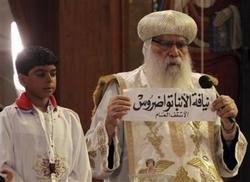 The electors, nearly 2,406 people, in the Coptic Orthodox Church selected the 118th successor to Saint Mark, Tawadros II. The new pope is the head of the Coptic Orthodox Church of Alexandria and Patriarch of All Africa. Until now, Tawadros has been an auxiliary bishop to the Archbishop Pachomius who’s been serving as the acting pope. Tawadros studied pharmaceutical sciences and was ordained a bishop in 1997.
The electors, nearly 2,406 people, in the Coptic Orthodox Church selected the 118th successor to Saint Mark, Tawadros II. The new pope is the head of the Coptic Orthodox Church of Alexandria and Patriarch of All Africa. Until now, Tawadros has been an auxiliary bishop to the Archbishop Pachomius who’s been serving as the acting pope. Tawadros studied pharmaceutical sciences and was ordained a bishop in 1997.
Residences of Maronite and Melkite Bishops in Aleppo, Syria
Archbishops Youssef Anis Abi-Aad, 72, and Jean-Clément Jeanbart, 69, have taken refuge in other places since their residences were ransacked in the past few days. Clashes between Assad’s forces and other groups are to blame. It is said that “unidentified groups, who want to foster a sectarian war and involve the Syrian people in a sectarian strife.” Not a much more is known at this point.
Catholic University Looks East
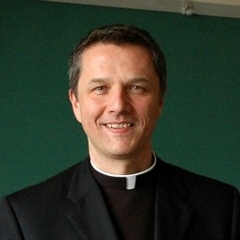 Salvation comes from the East! You’ve heard that before, no? If not, then it is news you ought to welcome, not just because an Eastern Catholic priest, Father Mark Morozowich is the new Dean of the School of Theology at the Catholic University of America.
Salvation comes from the East! You’ve heard that before, no? If not, then it is news you ought to welcome, not just because an Eastern Catholic priest, Father Mark Morozowich is the new Dean of the School of Theology at the Catholic University of America.
Saint Sharbel Makhūf
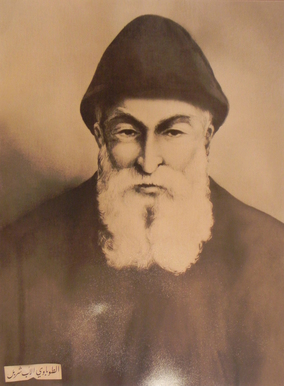 O God, who called the Priest Saint Sharbel Makhūf to the solitary combat of the desert and imbued him with all manner of devotion, grant us, we pray, that, being made imitators of the Lord’s Passion, we may merit to be co-heirs of his Kingdom.
O God, who called the Priest Saint Sharbel Makhūf to the solitary combat of the desert and imbued him with all manner of devotion, grant us, we pray, that, being made imitators of the Lord’s Passion, we may merit to be co-heirs of his Kingdom.
Shenouda III, Pope of Alexandria, dead at 88
On Saturday, 17
March 2012, Pope Shenouda III, the 117th head of the Coptic Christians died.
Shenouda was the successor of Saint Mark. He led his Church since November
1971.
UK’s Mail Online has a story of
Pope Shenouda with other photos here. Plus, the Washington Post has an article to
read.
Pope Benedict XVI sent this note of condolence to the Coptic
Christians:
On learning of the sad departure to God, our common Father, of His
Holiness Shenouda III, Patriarch of Alexandria on the See of Saint Mark the
Evangelist, I wish to express to the members of the Holy Synod, to the priests
and all the faithful of all the Patriarchate, my most sincere brotherly
compassion. I recall with gratitude his commitment to Christian Unity, his
memorable visit to my predecessor Pope Paul VI, and their signing of the Joint
Declaration of Faith in the Incarnation of the Son of God together in Rome, on
May 10, 1973, as well as his Cairo meeting with Pope John Paul II during the
Great Jubilee of the Incarnation, on February24, 2000. I can say how the
Catholic Church as a whole shares the grief that afflicts the Orthodox Copts,
and how she stands in fervent prayer asking that He, who is who is the
Resurrection and the Life, might welcome his faithful servant. May the God of
all mercy receive Pope Shenouda in His joy, His peace and light.
When I met Pope Shenouda in St Louis, Missouri in 1994, it was a very interesting experience all around. May God be merciful to him and Saint Mark his steps to paradise.
The photo
above is of Pope Shenouda sitting on his throne one last time before burial.
Perhaps the Roman bishops would like to adopt this practice.

